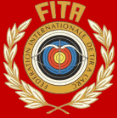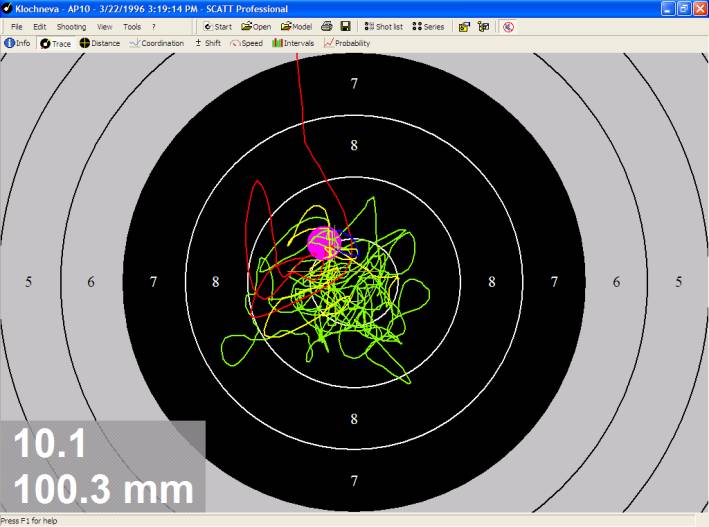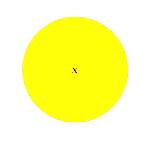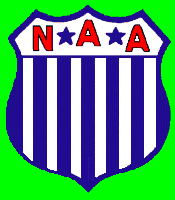
In this newsletter: |
| National Target Championship: It's Not Too Late! One of the largest, most enjoyable tournaments in the US is going to be held in Colorado Springs, just about one month from now. There are a great number of JOAD archers that shoot at this event each time - you can shoot and you can have fun too! It is a long event but it is spaced out so that you only shoot two distances each day for 4 days running. MANY young archers shoot their best personal scores ever at this event.  There has been an extension in the deadline for the event - you can register up until July 8th with no late penalty! Use the link to read more and see the information on the event. There has been an extension in the deadline for the event - you can register up until July 8th with no late penalty! Use the link to read more and see the information on the event. |
Back to top |
| PowerPoint Advances Instruction The NArchival Archery has a program for instructing those who in turn wish to instruct. The process is divided into "levels" and each level has it's own purpose. The USA Archery website has a page that explains these in some depth. These levels as well as the entire process are under review and likely to evolve in the near future. Right Now, Right Here, the Level I curriculum is something that any serious archer can benefit from, and the same is true for the Level II. It also is a logical way for any archer to be able to become more aware of his performance's causes, and hopefully become informed enough to act as an intelligent spokesman for the sport, and to act as a natural encouragement to younger archers.  The level I course content has been put into a Microsoft Powerpoint presentation by Larry Sullivan, a long-time archer and coach. It makes great sense, conveys information well, and can be used as a reference by JOAD instructors in a more informal way with their kids as well. In order to view it you will need to have the Powerpoint program, or else a viewer like this one. Download this zip file and unzip the contents into a folder. Then just click on it to run it. |
Back to top |
Which Colleges and Universities Support Archery               About a year ago the X Files, the NAA's JOAD Newsletter, had an article concerning the colleges and universities of the U.S. that actively permit or even support (surprise!) archery for its students... To read this article, and find out more,
go to this link..... About a year ago the X Files, the NAA's JOAD Newsletter, had an article concerning the colleges and universities of the U.S. that actively permit or even support (surprise!) archery for its students... To read this article, and find out more,
go to this link.....
and after that, for
more information on college archery, try the
Clarke Sinclair Memorial
Scholarship site.
Be sure to let the webmaster know about your college's archery program, if it is not listed! |
Back to top |
FITA Target Rule Changes From the FITA congress in Madrid, June 2005, the following rules have been changed: Pasting verbatim from the FITA website: (with comments by Ron Carmichael and Tom Barker in italics) Olympic Round For Olympics there can be two separate Fields of Play each containing two targets. (Similar to courts in tennis) Comment: First, this is only for the benefit of televising of the Olympics! Second, I'm surprised they mentioned another sport like tennis in their rules. I think this will allow there to be MORE action with two matches going on at the same time for the spectators to watch, and the cheering from one match might influence the archers on the other. This will also require more judges and coordination from the DOS. Another potential problem with "parallel play" is that if the crowd in the stands on the next court over breaks out into cheering right as the serve happens, the tennis player gets a "do over" in the form of a second serve. No "do overs" in archery if the crowd explodes right as the archer goes through click (on the wrong field). As far as spectators are concerned, they will have to choose one or the other field and risk missing other good matches. TV coverage is likely to be better as long as enough resources (ie, cameras and instant replay devices) are devoted. It might be viewed by some spectators as a devalued ticket and by others as a good way to choose the matches of their countrymen. It's not necessarily a negative thing, but I think a lot depends on the designers's wisdom and forethought of the venue. Adds Tom Barker: Moreover, unless they are run simultaneously, the whistles or horns from one match will interfere with the other. If the match is going on the judges clock, then the spectators will not understand when it is officially start and stop. It is possible that with multiple matches going that the spectators will react like the FITA and there will be no cheering or else inappropriately timed cheering. The first Elimination Round will now be for 128 archers (1/64 th eliminations). The number of arrows will be 12 for the entire elimination round. This can be 4 ends of 3 arrows or 2 ends of 6 arrows.Comment: The 18 arrow match gave the archer more leeway to be sloppy and still recover his or her balance. It is now more important that the archer not have any sloppy shots. It is noted that when first instigated in 1992 all matchplay was 12 arrows. It appears that to speed up the earlier matches, such as the 1/64 and the 1/32, the DOS can dictate two ends of 6, and then for the more exciting(?) semis and quarters, the DOS can draw out the competition and increase the suspense. It also means that there will need to be several new scoresheets made up, presuming that this rule is applied to ALL Star FITA events that include an OR as a function of the event. The team elimination and finals round will be shot in 4 ends of 6 arrows shot in 2 minutes per end. Comment: Often the team archer will be less accurate on the first arrow due to rushing to setup and jitters, and then recover his or her balance for the next arrows, getting better each arrow. By reducing the number of arrows from 3 to 2, the archer has greater pressure to be very good on the first arrow. This also makes the entire match go faster. More archers will ultimately be sitting down in the shade thinking "wow, what happened - it's already over?" For alternating matchplay the time will be reduced to 30 seconds per arrow. For all other events the time will remain as it is. Comment: Again, this will result in more pressure on the archer to perform, especially in windy conditions. For Olympics the order of shooting can be altered so that an archer can shoot the 1/32nd immediately followed .by the 1/16th . This will make it clearer to the spectators who advances. Comment: It also speeds up the competition, reduces the downtime. More action, more action! The Executive Committee of FITA has the authority to decide what equipment can be on the Field of Play at Championships, Games and other important tournaments Tom Barker's
highly perceptive comments: If it were me, I wouldn't use the word "sloppy" in describing the effects of the reduction in arrows shot during each elimination round, because one can make a really good shot in this format and not score well because of the wind, especially in the alternating format. I think the archers should be required to shoot in the same 30 second time frame. If they really want to make things interesting then I think we should borrow from tennis where it is sets that count and not total points. The NBA doesn't crown their champion by the total number of points scored in a series, but how many games you won. Here you have to win say 4 out 7 ends, not total points. Have a bad arrow, it only costs you an end and not the whole match. Can you imagine the drama of the whole field watching a 7th end match? |
Back to top |
Classical Technique or Dynamic Aiming Technique? Do you hover "ON" for 4 seconds or do you move onto the target and release within 2 seconds? There is some interesting information on a website that discusses what are known as "Dynamic Aiming Technique" and the "Classical Technique". Find out which is which, and why one is MUCH more common in the successful elite rifle target shooters. Care to guess which? You'd be surprised!! As for whether the best rifle shooter aiming technique translates to the method used by the best, elite target archers as well, that remains to be seen. But there might be some logical basis for thinking so. This page also addresses a variety of topics related to, translatable by, archers. HIGHLY RECOMMENDED READING for coaches AND archers To read more, click here..... and be sure to check the portion on POSITIVE THINKING!! thanks to Kleanthes Koniaris for supplying the link to this page on the SAG board. |
Back to top |
|
X FIles JOAD Newsletter: Editor and Writers Requested The XFiles JOAD Newsletter is in need of new editors and writers. Yours truly has been at the helm for a few years, but my daughter is no longer a JOAD archer and my focus has changed as a result. We need new editors and writers to step up and start helping out in this endeavour if it is to continue!! This is a fun undertaking that has the potential to touch and positively effect the lives of many young archers around the United States. It is best performed by those who have JOAD archers of their own, so we are hoping that some of you will respond. You do not need professional expertise, just a willingness to volunteer and step up to the shooting line.What is involved? It is not very difficult, in fact it is fun. The editor simply uses persuasion, begging, and cajoling to get JOAD archers, parents, coaches, and judges to contribute articles and to decide when there is enough material to make an issue appropriate. There is no set schedule for publishing issues so there is not much "publish pressure" beyond what you put upon yourself. Once the articles are complete, the photos found, you send all the content to the email publisher (me) who maintains the subscriptions and emails the issue, and puts a copy on the JOAD.ORG website for posterity and continued access by all archers anywhere in the world.As a volunteer writer, you just write about what you feel is important for your own JOAD archer, from your perspective as a parent, as a coach, or most importantly, as a JOAD ARCHER YOURSELF. There is no monetary compensation - in other words, you get paid in ways other than money. Most importantly, you get the knowledge that you have done something positive to help other archers. It can be fun. So if you have a contribution to make, why not make it? Please write the current editor/publisher, Ron Carmichael, using this email link, to find out more. |
Back to top |


